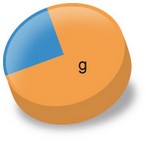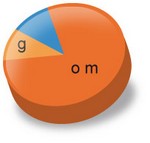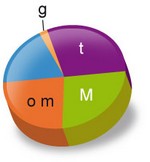Tous droits réservés © NeurOreille (loi sur la propriété intellectuelle 85-660 du 3 juillet 1985). Ce produit ne peut être copié ou utilisé dans un but lucratif.
Hearing loss is a general term that refers to a reduced auditory acuity. Although there are a few central causes for hearing loss (involving the brain), the large majority of hearing losses are caused by problems in the ear itself. Conductive hearing loss occurs in the outer and middle ear. Sensorineural (or perceptual) hearing loss generally occurs in the inner ear. In both of these categories, we distinguish between genetic and acquired hearing losses.
Depending on their severity, hearing loss can be mild, medium, profound or total.
Conductive and Sensorineural hearing losses
Conductive hearing losses are caused by problems in the external ear (often when the ear canal is blocked, by wax for example), or the middle ear (otitis, glue ear, damaged ossicles,…). The resulting deficit, which is generally moderate, mainly affects low, soft sounds: it is harder to hear soft voices or whispers.
Sensorineural hearing loss is caused by the malfunction of the inner ear (the cochlea), generally at the level of the hair cells or the auditory nerve. Rarely, hearing loss can be caused by damage to auditory brain.
Note that conductive and sensorineural hearing losses can occur at the same ear, creating a mixed hearing loss. For example, a disease of the middle ear such as advanced otospongiosis can have repercussions on the inner ear and cause a mixed hearing loss.
Unilateral and Bilateral hearing loss
Hearing loss can occur at only one ear (unilateral hearing loss), both ears symmetrically (bilateral symmetrical hearing loss), or be more pronounced in one ear than the other (asymmetrical bilateral hearing loss).
The effects on auditory perception are different: bilateral hearing loss is obviously more debilitating than one that is unilateral. This is similar to vision – surely we wouldn’t compare a blind person’s situation to that of someone with a single working eye!
Hearing losses: overview
In the Western world, the proportion of the population that suffer from hearing loss (at different severities) is around 7 to 8% (numbers taken from a ministerial census in France in 1998, which asked 4 million people).
An individual’s hearing loss can evolve over time. It can start quickly or develop slowly, and it can also be stable or variable.
The onset age of hearing loss is very important. In children, the repercussions of having a hearing loss differ depending on whether it develops before or after language. The age of the hearing loss is also important: if it is discovered soon after it occurs, the long-term repercussions on auditory perception will be different to a hearing loss that is present for a long time before being uncovered.
More and more countries are now using neonatal hearing tests and favouring prevention campaigns to minimise the effects of hearing loss.
Genetic and acquired hearing losses
Hearing loss can have a genetic base or be acquired after illness or damage (acoustic trauma, infection, intoxication, age…).
It can also be caused by a genetic predisposition: we do not all react in the same way to infection or trauma.
| At birth |
Statistics collected from different countries show that of 1,000 births, 1 to 1.5 will have profound hearing loss or deafness. A genetic cause (g) is at the root of ¾ of these cases. The other ¼ is acquired during pregnancy or the perinatal period. |
| In childhood |
A large majority of hearing loss is caused by problems in the middle ear (ME) such as chronic otitis (glue ear). The proportion of genetic hearing losses has dropped to around 10%. The rest (in blue) is linked to various factors. |
| In adulthood |
The factors of acquired hearing loss increase and now represent a large majority of cases. Genetic hearing loss now represent only a small percentage of causes, but it is important to note that in many cases (sound trauma, ototoxicity, Menière’s…) there is probably a genetic component that accentuates or accelerates the onset of the hearing loss. Chronic otitis of the middle ear now only represents around 20% of these factors, slightly less than Menière’s disease, which also affects the vestibular system, causing dizziness. Acoustic trauma, caused by overstimulation by sound, is now the major cause of hearing loss… and it’s getting worse (see the section: ‘ Noise: Warning! Danger!’). Other factors (in blue) complete the array of causes: medicine which is toxic to the ear, sudden hearing loss, etc… |
Age-related hearing loss
The graph below shows the average hearing level by the people in their 20s, 40s, 60s and 90s.
It is likely that individual variations are caused by a genetic component.
Note also that presbycusis is not independent from acquired hearing loss.
The ‘natural’ aging can be accelerated by an accumulation of pathologies over the years.
For example, excessive exposure to sounds that are too intense and traumatic cause presbycusis to develop early: you can be 40 or 50 and have the ears of a 90-year-old!
See how prebycusis can be accelerated following noise exposure !
Note: For the degrees of hearing loss, their detection and diagnosis, see " Current treatments"
 Français
Français
 English
English
 Español
Español
 Português
Português






Facebook Twitter Google+